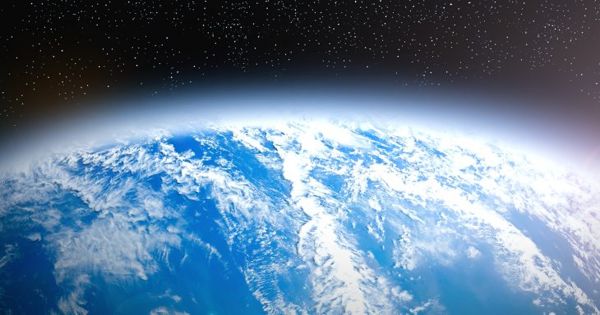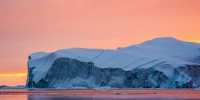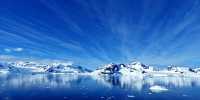Researchers at the University of Southampton have found that an extinction event 360 million years ago that destroyed most of the World’s Plant and freshwater marine life was caused by a temporary breakdown of the ozone layer that protects Earth from toxic ultraviolet (UV) radiation. This is a recently uncovered extinction process with significant consequences for today’s climate of warming.
A number of mass extinctions have occurred in historical history. Just one was caused by a meteor that struck the Planet 66 million years ago when the dinosaurs were extinct. Three of the others, including the culmination of the Permian Great Dying, 252 million years ago, were caused by massive continental volcanic eruptions that destabilized Earth’s atmospheres and oceans.
The ozone collapse occurred as the climate rapidly warmed following an intense ice age and the researchers suggest that the Earth today could reach comparable temperatures, possibly triggering a similar event.
Recently, scientists have found evidence that high levels of UV radiation have collapsed forest habitats and killed several species of fish and tetrapods (our four-limbed ancestors) at the end of the Devonian geological period, 359 million years ago. This destructive blast of UV radiation happened as part of one of the Earth’s temperature processes, rather than as a result of a massive volcanic eruption. Ozone collapse happened as the climate quickly warmed after an extreme ice age, and experts believe that the Planet could exceed equivalent temperatures today, potentially causing a similar occurrence. Their studies are published in Research Advances.
The team gathered rock samples during expeditions to the mountainous polar regions of East Greenland, which once formed a large ancient lake bed in the arid interior of the Old Red Sandstone Continent, made up of Europe and North America. This lake was located in the southern hemisphere of the Earth and may have been close in nature to today’s Lake Chad on the edge of the Sahara Desert.
Other rocks were obtained from the Andean Mountains above Titicaca Lake in Bolivia. These South American samples originated from the Southern Continent of Gondwana, which was similar to the Devonian South Pole. They kept hints as to what was happening at the edge of the melting Devonian ice sheet, causing a connection to be made between the extinction occurrence at the pole and at the equator.
Back in the lab, the rocks were dissolved in hydrofluoric acid, releasing microscopic plant spores (like pollen, but fern-like plants with no seeds or flowers) that had been frozen for hundreds of millions of years. On a microscopic examination, scientists found that many of the spores had bizarrely shaped spines on their surface—a reaction to UV radiation that destroyed their DNA. Also, several spores had dark pigmented walls, believed to be a kind of safe ‘tan,’ owing to elevated and dangerous UV levels.
The scientists believed that, at a time of accelerated global warming, the ozone layer dissolved for a brief time, exposing life on Earth to toxic amounts of UV radiation and causing a mass extinction event on land and in deeper water at the Devonian-Carboniferous border. Following the melting of the ice caps, the climate was very mild, with rising pressure over the continents driving more naturally created ozone-depleting chemicals into the upper atmosphere. This has resulted in high levels of UV-B radiation for several thousand years.
Leading scholar Professor John Marshall of the University of Southampton’s School of Ocean Science and Earth Sciences, which is a National Geographic Explorer, comments: “Our ozone shield has disappeared for a short time in this ancient era, coinciding with brief and fast warming of the Earth. Our ozone layer is naturally in a state of flux—always being created and lost—and we have seen this happened.
During the extinction, plants selectively survived, but were significantly disrupted by the destruction of the forest ecosystem. The dominant group of armored fish was extinct. Many that lived, sharks and bony fish, remain the dominant fish in our habitats to this day.
These extinctions have occurred at a crucial moment for the evolution of our own ancestors, the tetrapods. These early tetrapods are fish that developed into limbs rather than fins but still mostly living in the water. They had several digits and toes in their bodies. Extinction restores the course of their evolution, with the post-extinction survivors becoming terrestrial and the number of fingers and toes limited to five.
Professor Marshall says his team’s observations have alarming consequences for life on Earth today: “The latest projections indicate that we could hit comparable global temperatures to those of 360 million years ago, with the potential that a similar loss of the ozone layer will occur again, exposing the surface and shallow marine life to deadly radiation.
Remote areas visited in East Greenland are very difficult to enter, with transport requiring light aircraft capable of landing directly on the tundra. Transportation within the large field area consisted of inflatable boats loaded with outboard engines, many of which had to be mounted to small aircraft. CASP, an independent charitable trust based in Cambridge specializing in remote geological fieldwork, has managed all field logistics.
Mike Curtis, Managing Director of CASP says: “We have a history of assisting research geologists such as John Marshall and colleagues to access remote field areas and we are particularly pleased that their research has proved to have such potentially profound implications.”
The scientists believed that, at a time of accelerated global warming, the ozone layer dissolved for a brief time, exposing a life on Earth to toxic amounts of UV radiation and causing a mass extinction event on land and in deeper water at the Devonian-Carboniferous border. Following the melting of the ice caps, the climate was very mild, with rising pressure over the continents driving more naturally created ozone-depleting chemicals into the upper atmosphere. This has resulted in high levels of UV-B radiation for several thousand years.
















